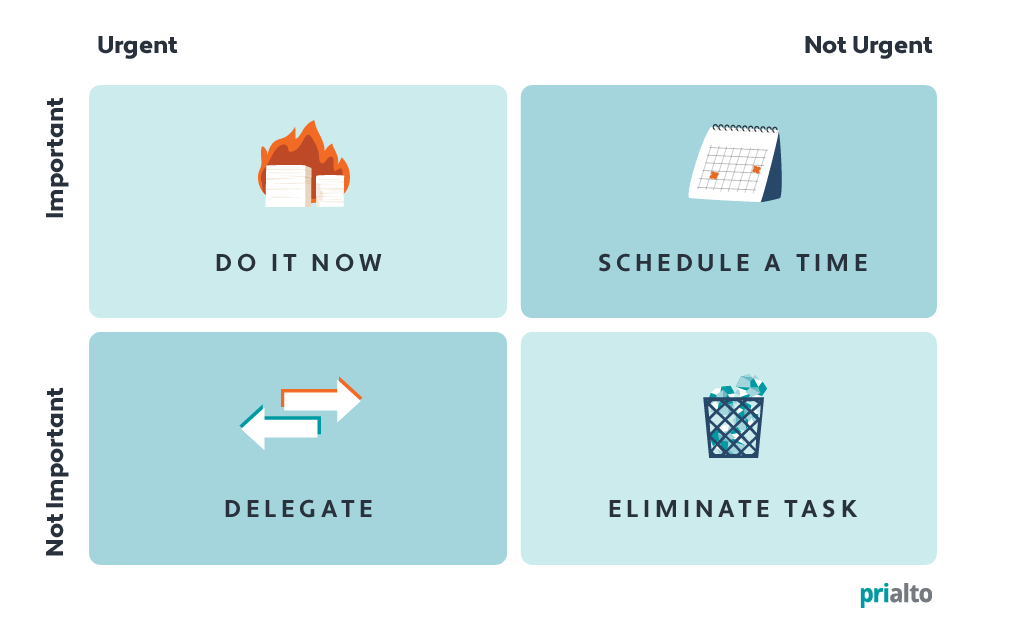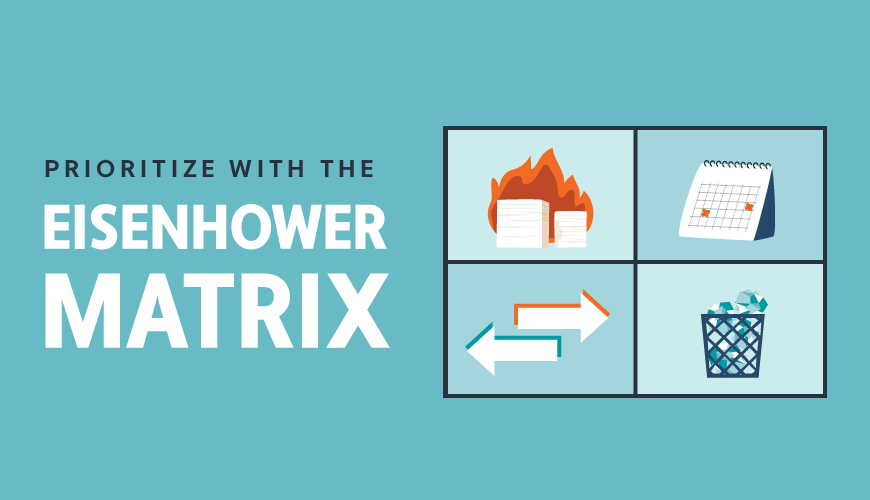"I have two kinds of problems, the urgent and the important. The urgent are not important, and the important are never urgent."
That's what the 34th U.S. President, Dwight Eisenhower, said. The man certainly faced his share of problems, both as president and in his previous roles as Supreme Commander of the Allied Forces in World War II and the first Supreme Commander of NATO.
The Eisenhower Decision Matrix, also known as the Eisenhower Matrix, was popularized by Stephen Covey's best-selling book, "The 7 Habits of Highly Effective People," and has become a widely used framework.
Here's how it works. You use a four-quadrant grid to rank tasks and decisions based on two key characteristics:
- The importance of the task to the overall success of the mission
- The urgency of the task

Place your tasks in the quadrants and tackle them as follows:
- Important and urgent quadrant tasks are completed immediately by you, such as crises, deadlines, and mission-critical problems.
- Important/Not Urgent quadrant tasks are scheduled and completed by you, such as planning, training, and non-urgent communication.
- Tasks in the Urgent/Not Important quadrant are delegated to others, such as scheduling meetings, making calls, or handling organizational work.
- Unimportant and not urgent quadrant tasks, such as time-wasters and distractions, are dropped.
The strength of the matrix lies in its applicability to nearly any role within any business. For busy entrepreneurs, it serves as an essential tool to help stay focused on the most important priorities.
Let's further analyze the categories by providing some examples for each quadrant.
Urgent and Important Decisions—Do it First
These are "house on fire" tasks, which are usually unplanned emergencies or time-sensitive events that must be managed by the business leader. A good rule of thumb is to prioritize tasks in this category that have strict deadlines and are mission-critical. Examples include:
- Closing a key account
- A key account at risk
- A product or system failure
Important but Not Urgent—Do it Later
These are mission-critical issues, but don't need immediate attention, and still need to be performed by you. You can control the timing. Examples include:
- Planning for the next quarter
- Key account reviews
- Technology or infrastructure upgrades
Urgent but Not Important—Delegate It
These are tasks that arise and require urgent attention, but not from you, and should be delegated to someone else. Examples include:
- Meeting requests
- Responding to emails
- Following up on sales leads
Not Urgent or Important—Don't Do It
These are tasks you shouldn't do at all. They can range from distractions to bad habits. Examples include:
- Surfing the web
- Playing video games
- Checking personal social media
Keep reading: How to Use the Iceberg Method to Save Time
Putting it All Together to Make Better Decisions
Like any productivity or time-management system, the Eisenhower Matrix is most effective when applied consistently and regularly. Recommended approaches include:
- Keep the list fresh. Placing tasks in the quadrants can free your mind and help you stay focused on what matters most.
- Limit your lists. Having too many tasks in each quadrant can actually hinder your time management. If there are more than eight items in a quadrant, consider seeking additional help. Focus on completing one task at a time. Start by clearing out your Urgent and Important quadrant.
- Use a single matrix for both personal and business tasks. No, you shouldn't spend hours on social media at work. On the other hand, you will need breaks for things like exercise and maybe even some time for a little Instagram. Just put them where they belong.
How to Offload the Urgent but Not Important Stuff
If you find yourself stuck in the "urgent but not important" category, you're not alone. It can be difficult to identify who should take on these tasks and how to delegate them. In a lean organization, team members likely don't have spare time, and if you're accustomed to handling some tasks yourself, breaking those habits can be challenging.
Virtual Assistant to the Rescue
A virtual assistant offers a convenient and efficient way to handle tasks in the bottom-right quadrant. Increasingly, busy executives are turning to this pay-as-you-go approach—delegating urgent but non-important tasks without hiring a full-time staff member. A virtual assistant can manage your email inbox, schedule meetings, follow up on phone calls, and pursue sales leads via email and phone. Managed virtual assistant companies ensure you get a top-quality assistant without increasing management responsibilities.
You may not be leading an army into battle, but it can sometimes feel that way. Ike (Eisenhower's nickname) can assist you in succeeding in your business challenges by clarifying what tasks you should handle and which ones you should delegate.
To learn more about how a virtual assistant can give you more leverage and boost your productivity, read our guide to working with a Prialto VA.
